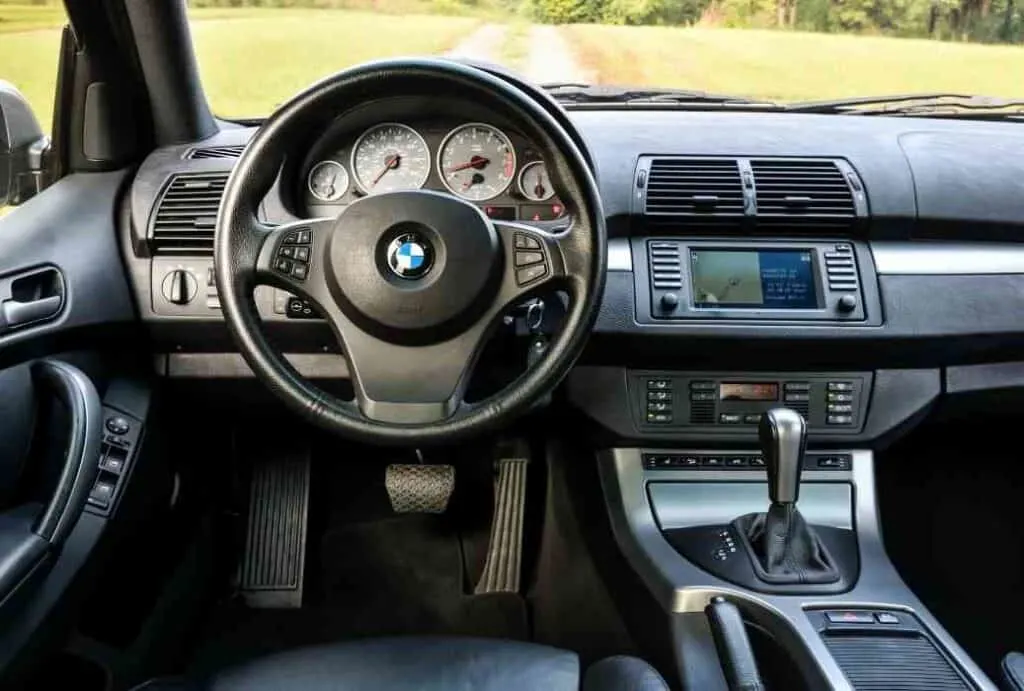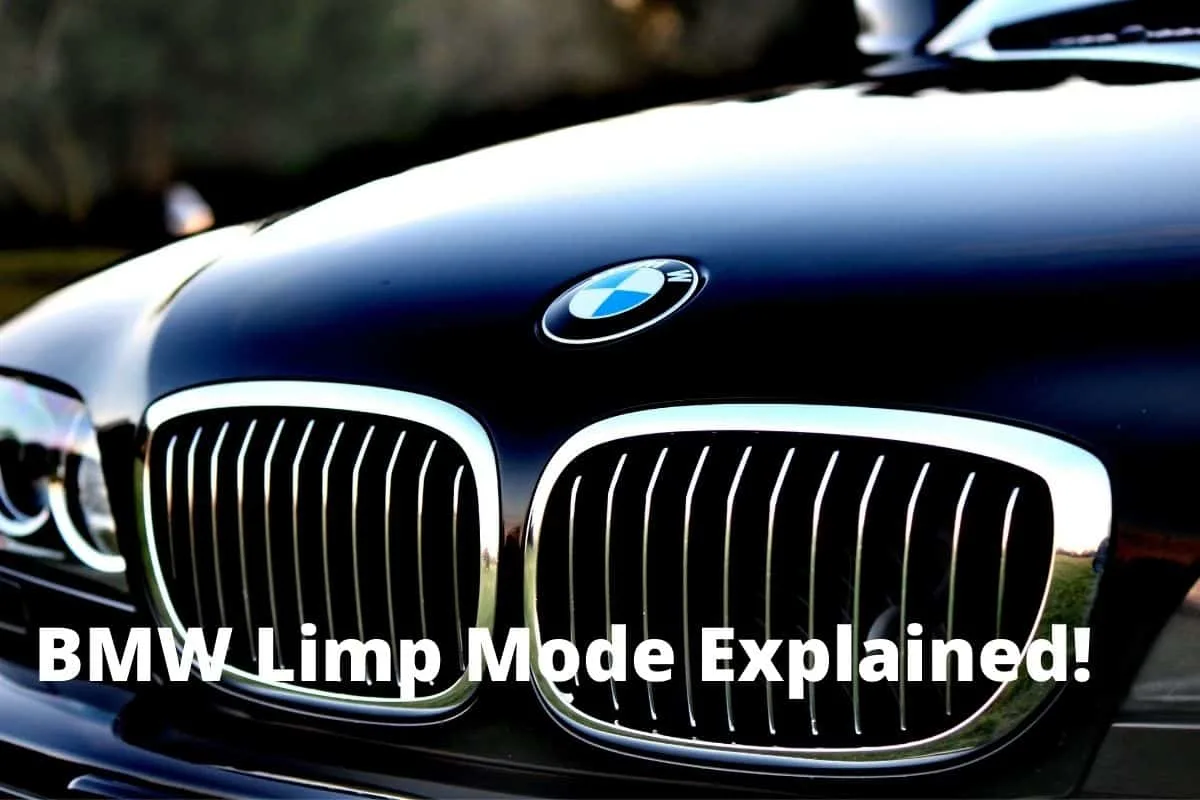BMWs are excellent vehicles to own, but it can be terrifying when it starts acting up out of nowhere. Since most people aren’t car experts, they will not know what’s happening when their car suddenly slows down and the dreaded ‘check engine light’ comes on. It’s best not to panic because there is a simple explanation of your vehicle.
What Is Limp Mode on A BMW?
It is sometimes referred to as ‘limp home mode.’
Limp mode on a BMW is meant to be a security feature in cars when the transmission control unit or the engine detects a fault in the system. Either of these systems will trigger the limp mode, which will reduce the functionality of the less critical parts of the vehicle, such as air conditioning, vehicle’s speed, etc.
The limp mode feature reduces waste of power on non-essential features and ensures that the issue doesn’t become grievous. In layman’s terms, it gives the car the chance to ‘limp home,’ in this case, to an auto repair shop.
It’s meant to warn the driver that something is wrong and it requires immediate attention.
The limp mode’s job is to act automatically to prevent further damage to the engine. If the owner fails to act when the ‘check engine light’ is on, it will take more drastic measures and shut off essential functions, including those that can affect the engine.
For example, it will switch off the turbo boost if it’s over the required 1.3 bar and lower the RPM limit to 3000 RPMs to preserve the engine.
How Long Can You Drive in Limp Mode?
Although it’s possible to drive while your car is in limp mode, it’s not recommended to do so. It is designed to allow you to drive to the nearest auto repair shop to get the problem fixed.
If there are clear signs that your vehicle is in limp mode, getting it fixed will save you money to repair severely damaged components.
Do not try to drive in limp mode if:
- The engine is overheating
- Oil light is on
- Temperature light is on
- Check engine light is flashing
- There is noise coming from the engine or transmission
There is also no specific distance a car in limp mode can run. This will depend on factors such as the condition your vehicle is in. The distance to your mechanic is what you should worry about at this time.
Read on to learn everything about the limp mode, its cause, symptoms, and how to fix it.

Signs That Your BMW Is in Limp Mode
These are the signs you have to look for to know that your vehicle is in limp mode. An expert can explain where the problem is but for ordinary people, it’s best to leave the diagnostics to the professionals.
1. Check Engine Light
This is one of the easiest ways to know there is a problem because it’s right there on your dashboard. Your check engine light might come on together with an EPC light or a similar one.
However, this light can turn on because of hundreds of reasons. That’s why the limp mode goes a step further and shuts down the potentially faulty component.
You can use an OBD2 scanner to check the trouble codes and what they mean. This will tell you what the problem might be so that you can fix it.
2. Reduced Engine Power
The sole purpose of the limp mode is to safeguard the engine. Therefore, it will try to reduce the engine’s work as much as it can by limiting power to non-essential components.
3. Lowered RPM limit
The computer will lower the RPM limit to 3000 RPM or lower when the limp mode is on. This is often accompanied by low driving speeds of 35-45 mph.
4. Stuck in Lower Gears
If there is a problem, the computer will limit the gear shifting on an automatic transmission vehicle. Often the transmission will keep the gear below 3 to keep the engine from further damage.
With the gear below 3 and the RPM limited to 3000 RPM, it means that you are driving very slowly. This is a sure sign that the limp mode is active and something is wrong.
| Symptom | Cause |
| Check Engine Light | Problems with transmission wiring |
| Rev Limit 2500-4000 RPM | Malfunctioning engine boost control |
| Under-boost | Defective engine components |
| Low performance | The engine sensors are faulty |
| Restricted functions | Problems with brake system wiring |
| Transmission shifting maximum third gear | Faulty engine wiring |
Common Causes For Limp Mode
1. Transmission Problem
Limp mode occurs when there is a logical problem in the vehicle’s computer system. This can happen when a sensor sends a signal value that is not what it was pre-programmed to send to the computer.
This makes the computer assume that that sensor is faulty. The computer will then go to its secondary programming, which will protect the transmission from further damage, leading to another error signal altogether.
2. Error in the Boost Deviation
A slight deviation from the recommended range in the turbo boost will result in the computer flashing the check engine light. This warns you that there might be a mechanical breakdown that requires your attention.
Boost control problems include a boost leak or over boost. Over boost occurs when there is a faulty or broken boost control valve, wastegate, wastegate hose, or boost pressure sensor.
Using an OBD2 scanner, check if there are any ‘soft codes’ listed. These codes will tell you if there is a faulty low priority sensor that should be replaced.
3. Battery Acid Leaks and Wiring Problems
When the battery acid leaks, it affects more than just the battery. The acid corrodes the wiring causing it to break, affecting the transmission of signals from the sensors to the computer.
Once the computer stops receiving signals, i.e., communication from the engine, it will assume there is a major issue with the transmission system.
Other causes of limp mode include:
- Transmission valve body
- Over boosts or under boost (Turbo engines)
- Faulty engine sensors
- Damaged wire harness
- Ground connection
- Low battery voltage
- ABS or Brake system issues
- Wheel speed sensor
- Manifold absolute pressure (MAP) sensor
- Throttle position sensor (TPS)
- Engine overheating
- ECU needs calibration
- Car accident
- Blown fuse for critical vehicle systems
- If water gets in an engine sensor, e.g., while washing the car.
How To Bypass Limp Mode?
Although it’s recommended that you immediately get your vehicle to a mechanic, 3 methods will help you bypass limp mode. These methods will help you try and reprogram your car’s computer to deactivate the limp mode.
Before anything, you have to pull over at a safe spot!
1. Check and Top Off Fluids
First, check your liquids while your vehicle is on level ground. Your vehicle should be in park and the engine running to check the transmission fluid. If it is low, it might be the cause that triggered limp mode.
Take note of the smell and color of the transmission fluid. If it is burnt or dirty, it will need replacement. Otherwise, top off the fluid to the correct level and shut off the engine.
2. Shut Off Engine and Restart
Next, you have to reset the car’s ECU. After shutting off the engine, wait for 5 minutes. Use this time to check the levels of the other fluids such as engine oil levels, water, etc., and top up what’s low.
This short rest time might be what the computer needs to reset itself and come out of limp mode.
3. Clear Check Engine Light
Thirdly, you could disconnect both battery cables from the battery and hold them together for 15-30 seconds. This is manually draining residual power that was storing engine problem codes for the computer. Doing this will make the computer ‘forget’ once the codes are cleared.
Alternatively, you can use an OBD2 scanner to clear the codes. It will achieve the same results safer than the manual method and faster.
Can Limp Mode Be Fixed?
Yes. The limp mode can be fixed. However, depending on what caused the limp mode in the first place, the repair costs can vary from $50-$500 and sometimes even higher in severe cases. You can also do it yourself, which will save you some money although an expert can only do it.
Instead of trying to bypass the limp mode, which is complicated and sometimes ineffective, you should fix the problem. You do this by using the OBD/OBD2 scanner to read the codes stored in the vehicle’s computer. These codes will tell you exactly what components have problems so that you can replace them.
The interpretation of the codes from the OBD/OBD2 scanner might lead you to the problem but remember that any small fault such as damaged wires can affect the reading. This means that you can replace a part and still have the check engine light remain on.
To mitigate this problem, have a multimeter with you to inspect wire conductivity. If electricity is flowing but not reaching the sensor, then you have to replace the wire.
